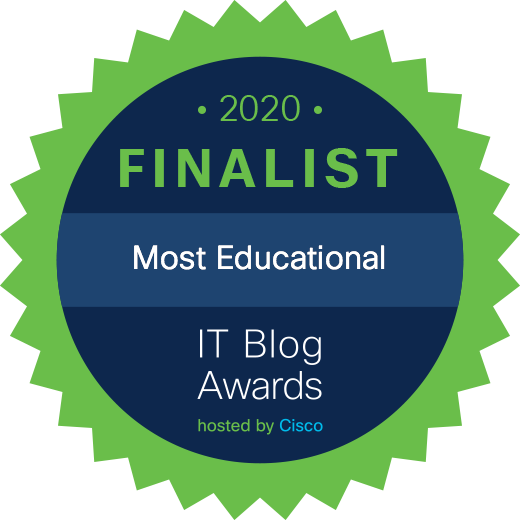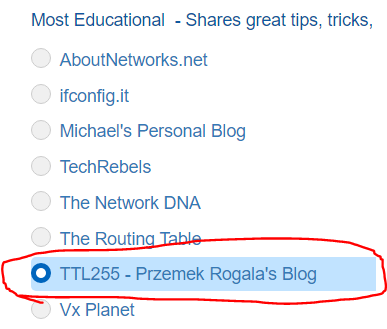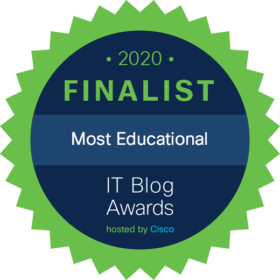Computing Euclidean distance on 144 dimensions


Late last year I read a blog post about our CSAM image scanning tool. I remember thinking: this is so cool! Image processing is always hard, and deploying a real image identification system at Cloudflare is no small achievement!
Some time later, I was chatting with Kornel: "We have all the pieces in the image processing pipeline, but we are struggling with the performance of one component." Scaling to Cloudflare needs ain't easy!
The problem was in the speed of the matching algorithm itself. Let me elaborate. As John explained in his blog post, the image matching algorithm creates a fuzzy hash from a processed image. The hash is exactly 144 bytes long. For example, it might look like this:
00e308346a494a188e1043333147267a 653a16b94c33417c12b433095c318012
5612442030d14a4ce82c623f4e224733 1dd84436734e4a5d6e25332e507a8218
6e3b89174e30372d
The hash is designed to be used in a fuzzy matching algorithm that can find "nearby", related images. The specific algorithm is well defined, but making it fast is left to the programmer — and at Cloudflare we need the matching to be done super fast. We want to match thousands of hashes per second, of images passing through our network, against a database of millions of known images. To make this work, Continue reading
Streaming Telemetry with Avi Freedman on Software Gone Wild
Remember my rant how “fail fast, fail often sounds great in a VC pitch deck, and sucks when you have to deal with its results”? Streaming telemetry is no exception to this rule, and Avi Freedman (CEO of Kentik) has been on the receiving end of this gizmo long enough to have to deal with several generations of experiments… and formed a few strong opinions.
Unfortunately Avi is still a bit more diplomatic than Artur Bergman – another CEO I love for his blunt statements – but based on his NFD16 presentation I expected a lively debate, and I was definitely not disappointed.
Streaming Telemetry with Avi Freedman on Software Gone Wild
Remember my rant how “fail fast, fail often sounds great in a VC pitch deck, and sucks when you have to deal with its results”? Streaming telemetry is no exception to this rule, and Avi Freedman (CEO of Kentik) has been on the receiving end of this gizmo long enough to have to deal with several generations of experiments… and formed a few strong opinions.
Unfortunately Avi is still a bit more diplomatic than Artur Bergman – another CEO I love for his blunt statements – but based on his NFD16 presentation I expected a lively debate, and I was definitely not disappointed.
A quirk in the SUNBURST DGA algorithm


On Wednesday, December 16, the RedDrip Team from QiAnXin Technology released their discoveries (tweet, github) regarding the random subdomains associated with the SUNBURST malware which was present in the SolarWinds Orion compromise. In studying queries performed by the malware, Cloudflare has uncovered additional details about how the Domain Generation Algorithm (DGA) encodes data and exfiltrates the compromised hostname to the command and control servers.
Background
The RedDrip team discovered that the DNS queries are created by combining the previously reverse-engineered unique guid (based on hashing of hostname and MAC address) with a payload that is a custom base 32 encoding of the hostname. The article they published includes screenshots of decompiled or reimplemented C# functions that are included in the compromised DLL. This background primer summarizes their work so far (which is published in Chinese).
RedDrip discovered that the DGA subdomain portion of the query is split into three parts:
<encoded_guid> + <byte> + <encoded_hostname>
An example malicious domain is:
7cbtailjomqle1pjvr2d32i2voe60ce2.appsync-api.us-east-1.avsvmcloud.com
Where the domain is split into the three parts as
| Encoded guid Continue reading |
|---|
Enterprise File Workloads Shift to Cloud Data Management in 2021
Next year brings a new normal where cloud becomes core to enterprise IT strategies. As a result, multi-cloud data management becomes more important.Upcoming Webinar: How Routers Really Work
Just a gentle reminder that on Monday (just a few days from now) I’m teaching a three hour webinar over at Safari Books on How Routers Really Work. From the course description—
This training will peer into the internal components of a router, starting with an explanation of how a router switches packets. This walk through of a switching path, in turn, will be used as a foundation for explaining the components of a router, including the various tables used to build forwarding tables and the software components used to build these tables.
TTL255 finalist of Cisco 2020 IT Blog Awards
I'm excited to announce that TTL255.com is one of the finalists in the Most Educational category of the 2020 IT Blog Awards, hosted by Cisco.
Over the years I learned great deal from blogs and videos created by community members. At one point I realized that I also might have something to offer and started this blog to give back to community hoping to teach and inspire others.
Creating valuable technical content takes a lot of work and time commitment. After years of posting here I appreciate even more all content makers out there that often don't ask for anything in return.
This year I decided to submit TTL255.com to 2020 IT Blog Awards hoping to reach more people and see where that takes me.
If you find my content valuable and worth your time, please consider voting for TTL255.com by following the below link:
https://www.ciscofeedback.vovici.com/se/705E3ECD2A8D7180

You can find me in the Most Educational category:

While you there have a look at other amazing blog posts. Some of them might inspire you, some will teach you something new. All come from members of community that put themselves out there to share their knowledge with Continue reading
2020 IT Blog Awards finalist!

I have the honor of having my blog selected as a finalist in the Most Educational category of the 2020 IT Blog Awards, hosted by Cisco. It is an honor and a great joy for me to be selected, for the third consecutive year, alongside other high-level bloggers who all have very deep technical knowledge! I hope you enjoy my articles as much as I enjoy writing and sharing them. I know I could write more, but I try to put quality ahead of quantity. Please click here to vote…
The post 2020 IT Blog Awards finalist! appeared first on AboutNetworks.net.
International Community Joins Indian Policy and Cybersecurity Experts in Warning about the Dangers of Traceability

A growing group of international and local cybersecurity and policy experts are weighing in on proposed changes to Indian regulations that could jeopardize the safety of billions worldwide. By seeking to restrict WhatsApp and other popular messaging apps’ use of end-to-end encryption, the proposed policies pose a major threat to cybersecurity in India.
In Traceability and Cybersecurity, over 50 cybersecurity experts in Europe, North and Latin America, Africa, and the Asia-Pacific region agreed that amendments to the Information Technology (Intermediaries Guidelines) Rules under the Indian Information Technology Act proposed by the Indian Ministry of Electronics and Information Technology (MeiTY) will create many more problems than it seeks to solve.
Produced as a result of a global technical experts meeting series organized by the Internet Society in partnership with Medianama, the report notes that MeiTY’s proposal ignores sound advice: requiring intermediaries such as WhatsApp to enable the traceability of the content and data they handle is a major threat not only to the safety of users, but to India’s national security.
The report stresses that traceability would mean enabling third-party access to private communications, a move that undermines the end-to-end encryption that users everywhere, including government entities, rely on to Continue reading
Introducing Cloudflare Pages: the best way to build JAMstack websites


Across multiple cultures around the world, this time of year is a time of celebration and sharing of gifts with the people we care the most about. In that spirit, we thought we'd take this time to give back to the developer community that has been so supportive of Cloudflare for the last 10 years.
Today, we’re excited to announce Cloudflare Pages: a fast, secure and free way to build and host your JAMstack sites.
Today, the path from an idea to a website is paved with good intentions
Websites are the way we express ourselves on the web. It doesn’t matter if you’re a hobbyist with a blog, or the largest of corporations with millions of customers — if you want to reach people outside the confines of 140 280 characters, the web is the place to be.
As a frontend developer, it’s your responsibility to bring this expression to life. And make no mistake — with so many frontend frameworks, tooling, and static site generators at your disposal — it’s a great time to be in your line of work.
That is, of course, right up until the point when you’re ready to show your work off Continue reading
Build Your Virtual Lab Faster with My Network Simulation Tools
I love my new Vagrant+Libvirt virtual lab environment – it creates virtual machines in parallel and builds labs much faster than my previous VirtualBox-based setup. Eight CPU cores and 32 GB of RAM in my Intel NUC don’t hurt either.
However, it’s still ridiculously boring to set up a new lab. Vagrantfiles describing the private networks I need for routing protocol focused network simulations are a mess to write, and it takes way too long to log into all the devices, configure common parameters, enable interfaces…
Build Your Virtual Lab Faster with netlab
I love my new Vagrant+Libvirt virtual lab environment – it creates virtual machines in parallel and builds labs much faster than my previous VirtualBox-based setup. Eight CPU cores and 32 GB of RAM in my Intel NUC don’t hurt either.
However, it’s still ridiculously boring to set up a new lab. Vagrantfiles describing the private networks I need for routing protocol focused network simulations are a mess to write, and it takes way too long to log into all the devices, configure common parameters, enable interfaces…
Flask web app tutorial for network engineers
Most network engineers don’t need to create web sites but they may, like me, want to convert their existing Python command-line programs into web apps so others can use them more easily. This tutorial presents the minimum you need to know about Python, Flask, and the Bootstrap CSS framework to create a practical web app that looks professional.
This tutorial covers a different type of use-case than is usually demonstrated in Flask tutorials aimed at beginners. It shows you how to create a web app that “wraps up” another Python program’s functionality.

I will show you how to use the Flask framework to build a web app that re-uses code from my Usermapper program and enables users to run it on a website, instead of installing and running it locally on their PC. You will create a “usermapper-as-a-service” application, served as a responsive web app that looks good on computer screens, tablets, and mobile phones.
I wrote this tutorial while I was learning Flask and developing my usermapper-web Flask application. It was written by a beginner, for other beginners. It walks through topics in the order in which I learned them. I hope you find this approach to be readable Continue reading
Get Your Technology Teams Thinking Like the Customer
CIOs must bring customer metrics into their technology teams and wire the voice of the customer into the business processes that they design and automate.Automated, Simplified DNS Troubleshooting for Kubernetes: Only in Calico Enterprise
The Domain Name System (DNS) is a naming system for computers, services, or other resources connected to the Internet or a private network. DNS translates domain names to the numerical IP addresses needed for locating and identifying computer services and devices. For decades It’s been an essential component of the Internet. It’s an essential part of Kubernetes as well, and is used to determine how workloads connect to Kubernetes services as well as resources outside the cluster.
DNS also happens to be a common source of outages and issues in Kubernetes clusters. When applications are not working as expected, the root cause is often DNS-related. However, debugging and troubleshooting DNS issues in Kubernetes environments is not a trivial task given the limited amount of information Kubernetes provides for DNS queries.
Lacking the necessary visibility into the cluster to correlate a DNS query or reply with a specific workload, for example, you are left in the dark. Without Kubernetes context, you are unable to capture even the most fundamental information needed for troubleshooting, such as the type of DNS query (or reply) or the source of the query.

Figure: The DNS Dashboard from Tigera helps Kubernetes teams more quickly confirm or Continue reading
Tech Bytes: Accelerating Cloud Applications With Riverbed’s Cloud SteelHead (Sponsored)
Today's Tech Bytes is a customer story with sponsor Riverbed. It’s a tale of latency and its impact on network performance when moving applications to cloud. Our guests from Riverbed are Aly Walowski, whose title is roughly “Cloud Goddess” at Riverbed; and Jack Sweeney, Major Account Manager.
The post Tech Bytes: Accelerating Cloud Applications With Riverbed’s Cloud SteelHead (Sponsored) appeared first on Packet Pushers.